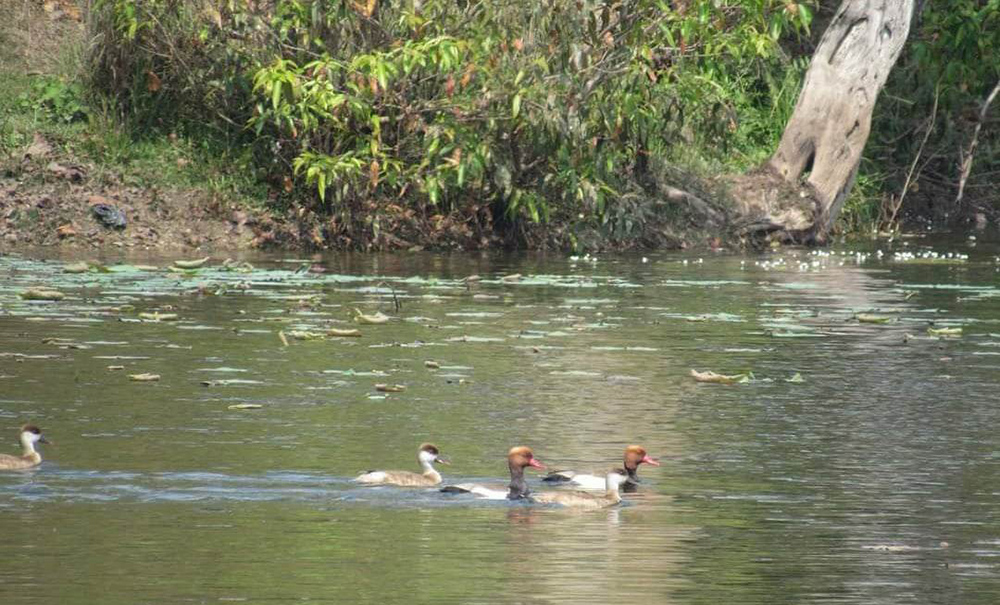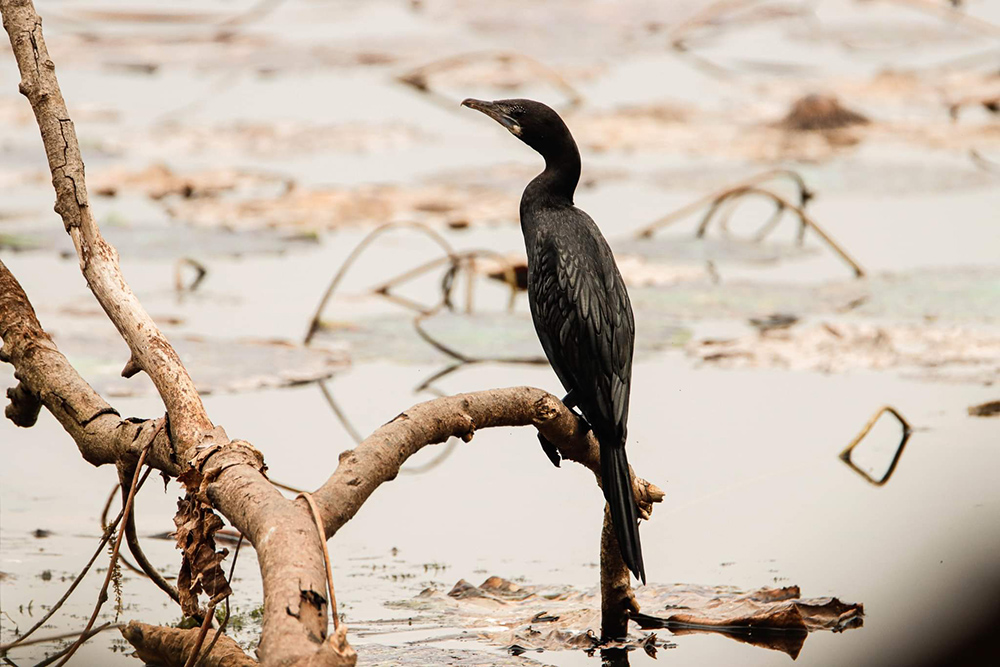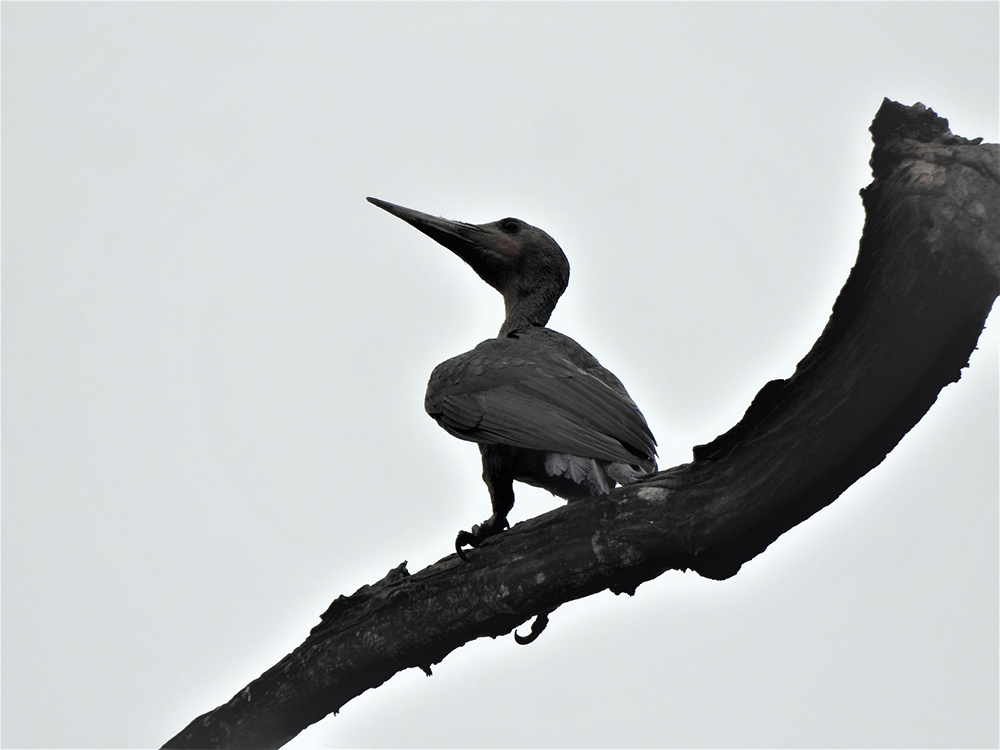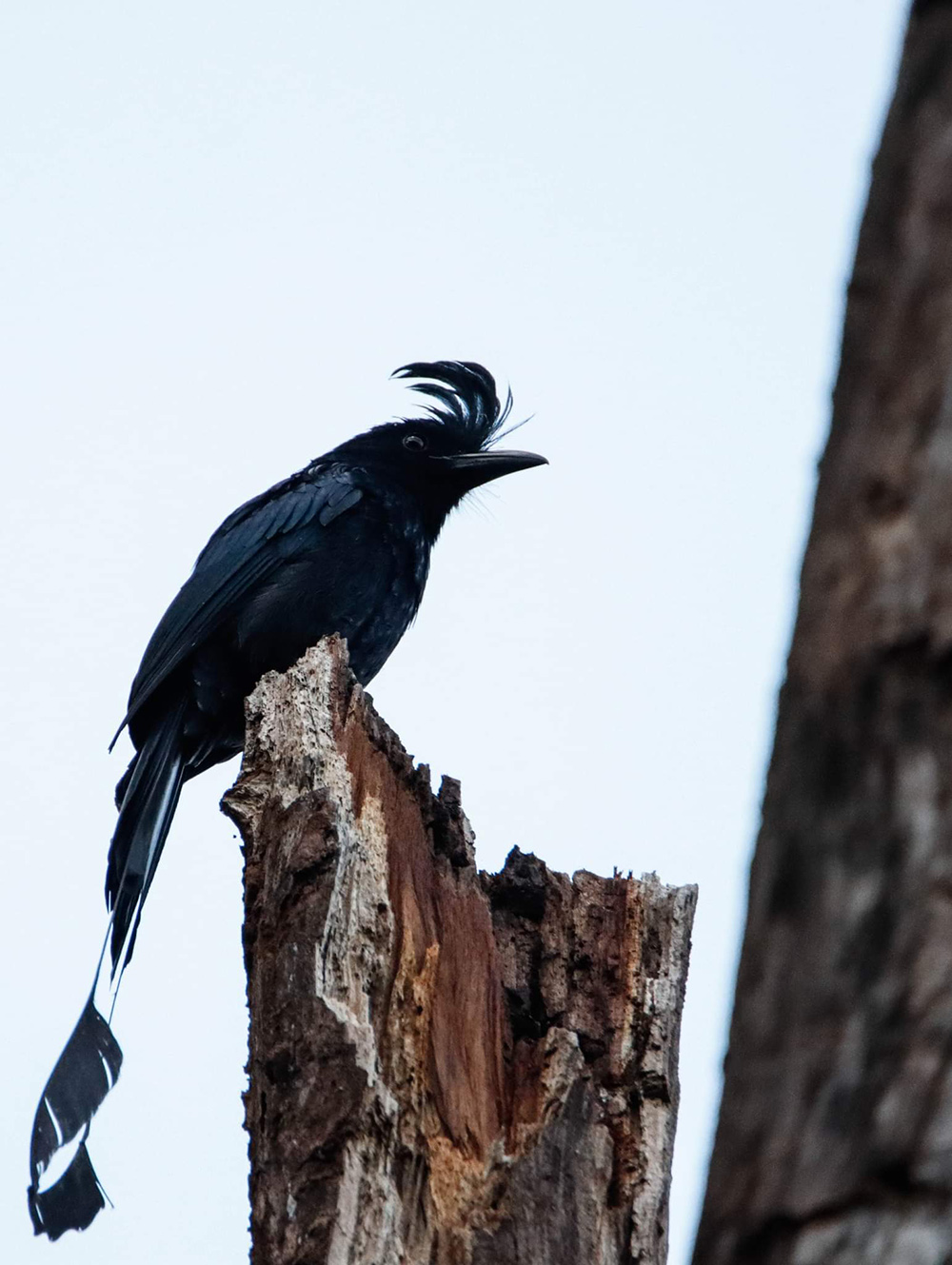Climate change taking toll on birds at Ghodaghodi wetland area
 NepalPress
NepalPress

KAILALI: Climate change is taking its toll on Kailali’s Ghodaghodi wetland area home to thirteen species of endangered and sensitive birds. Problems seen in the habitat of rare birds such as KAILE TAUKE duck, Raj Dhanesh, Raj Lahanche, Bhuriphor Garud, Sunaulo Top Chara, Ghegri Ghanse Fistor, and Laghu Mahachil have pushed them on the verge of extinction.
Bhuriphor Garuds spotted at Ghodaghodi in 2007 have not been seen again since then. Bird conservationists say that these birds are no longer available due to adverse effects triggered by climate change to their habitat.
Bird expert Hem Sagar Baral says that Bhuriphor birds have not reproduced any babies to the west of Kapilvastu for the last few years. “Non-reproduction shows Bhuriphor birds are going extinct”, added Baral.

“Water sources drying up at Ghodaghodi is the biggest problem for birds”, Baral said adding “Climate change has affected the water sources at Ghodaghodi which has directly affected the birds here”.
Raj Dhanesh and Raj Lahanche birds sit on the large species of saal trees. These birds have changed their habitats due to the rapid logging. It is learnt that birds’ habitats were destroyed after trees were felled in the name of scientific forest management some years ago. Raj Dhanesh and Raj Lahanche birds have migrated to their new habitats from Sita Kunda Community Forest, and Lathuwa Community Forest.
However, some new birds can be spotted in these forests due to change in temperature. Kade Bhyakur can be spotted up to Chure Fedi. Earlier, this bird was not available at Ghodaghodi area. “The bird might have come to Ghodaghodi looking for new habitat or change in temperature”, said Baral.

Nepal is home to 886 species of birds right now. Among them, 360 species of birds are available in Ghodaghodi only. Thirteen birds from Ghodaghodi are also included in the list 43 of the worlds’ endangered birds. Ghodaghodi is also home to 58 endangered birds of the country. The impact of climate change is seen more in migratory birds rather than in local ones.
Ghodaghodi receives migrant birds from Siberia and Magnolia, among other parts of the world. Until not long ago, these birds used to stay in the area from October to March. These days, migrant birds have started returning in February itself. Bird Conservation Network Chair DR Chaudhary says that birds from Siberia and Mangolia would reach up to Ghodaghodi to avoid freezing cold. Due to temperature rise, their stay has shortened though.
Not only has the stay of migrant birds shortened. Birds’ number and species coming to Nepal have also diminished, which is a matter of concern, shared Chaudhary.
Migrant birds coming from mid-Asia through East Asia via Australia to Ghodaghodi have stopped staying for a long time. “Around 2000 migrant birds of 19 species were recorded at Ghodaghodi some years back. Both the number and species of birds coming to Nepal declined significantly last year”, Chaudhary stated.

Increasing urbanization, rising temperature and climate change have shortened the stay of birds coming to Nepal from Mangolia and Russia by preparing journeys of 3,000 and 5,000 kilometers respectively, according to Chaudhary.
Habitat, fodder and temperature change have led to the migrant birds to change their destinations, Chaudhary’s study shows. Koili birds from Siberia, Mangolia, South Korea, India, Sri Lanka, Bangladesh, Thailand, Maldives come to Ghodaghodi to procreate.
It is said that the world has nine birds’ flight routes. Migrant birds use two flight routes to Nepal. Around 300 species of birds reach Ghodaghodi through mid-Asia flight route. Among those birds using this route are Fiste birds, birds of duck species and oceanic birds. Sometimes, khoya ducks are also seen in the area.

Bird census started at Ghodaghodi lake back in 2000. Then, the number of Harihansh stood at 1000. Based on the same data, Ghodaghodi was listed in Ram wetland area. However, the census conducted in 2009 found the number just at 145.
“Bird habitats are facing the severe problem at present”, said Bird Conservation Association’s Hirulal Chaudhary. Human activities have destroyed birds’ habitats. “Failure to conserve the reproductive area has led to the drop of Harihansh”, added Hirulal Chaudhary.
Most of the birds had disappeared from 2003 to 2009 in Ghodaghodi area. Around 20, 000 water birds were found in Ghodaghodi in 2003 while the number shrunk to just 752 in 2009. As many as 2058 birds were spotted in the area last year.
Apart from climate change, poaching and lack of conservation have also caused the birds to disappear. In 2003, the population of Harihansh was around 1000. Now, the number dwindled to 400 last year. Conservationists say that trees required for Harihansh to reproduce were damaged during forest handover to local levels from 2003 to 2009.
Harihanshs lay eggs on large, dry trees and hatch babies. Due to damage to such trees of late, they are facing lack of space to hatch babies. Local birds have also changed their birthing places due to disturbance in reproductive habitats.

Ghodaghodi area is home to 24 lakes including big and small. Of them, only Ghodaghodi and Nakrod Lakes have water throughout the year. Locals dry up some lakes for fishing while other lakes have changed into pastures.
Ghodaghodi Public Awareness Manch’s Chair Hem Bam says that most of the lakes do not have water at the moment. Water birds have disappeared for lack of water in the lakes. “Water level has gone down in river. Lakes are running dry for lack of water. Wildfires are also causing the birds to disappear”, Bam added.
Water researchers say that alkaline level has increased in water of Ghodaghodi lake. Rising human activities, depleting water source and soaring pesticides have increased acidity in Ghodaghodi lake, according to Dr Ram Devi Shah. This will hit biodiversity, Shah stated.

Birds Conservation Association Nepal’s Executive Director Ishan Thapa says that falling water level in the lake had destroyed birds’ habitats. “Change in habitats, fodder and temperature has decreased the birds’ number which is sensitive”, Thapa added.
Water birds of duck species would hatch babies from 90 per cent of the laid eggs in the past. But, nowadays, only 40 per cent eggs bear baby birds.

Water expert Chhatra Mani Sharma says that increasing use of pesticide is behind the eggs failing to bear baby birds. “Change in temperature coupled with use of pesticide might be behind eggs not bearing baby birds”, Sharma added.
Ghodaghodi was declared Nepal’s First Bird Sanctuary on March 11, 2022. The announcement was expected to add some dimensions for birds’ conservation. However, nothing concrete has been done to protect the endangered and migrant birds so far.

Photos by : Hirulal Chaudhary and Hari Tiwari














